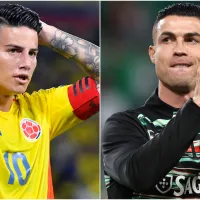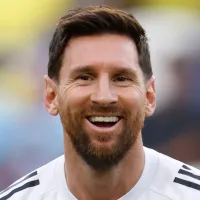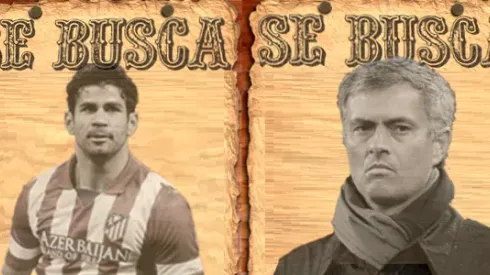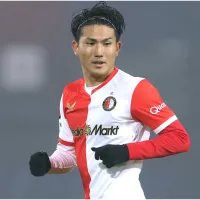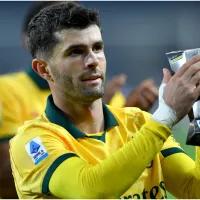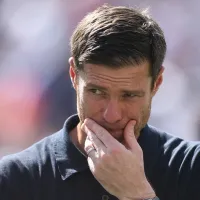
It was hard not to let out a wry smile this season as Jose Mourinho got into odd beefs with his medical staff, and the well-mannered Diego Costa shockingly veered off into the deep end of on the pitch debauchery. The delight was not due to any particular veneration for the pair but more out of relief: They aren’t La Liga’s problem anymore.
There was a time not too long ago when the wily duo’s shenanigans were a regular staple in Spain. Week in, week out it seemed yet another ridiculous controversy would surround them both. Now they’re the Premier League’s problem.
Costa, having now completed his three-match ban for … let’s call them antics … against Arsenal, was not any less of a terror in Spain. In fact it’s where he honed his particular brand of “aggression.” Mourinho, on the other hand, was already well known for his bullish tone with the media and his self-aggrandizing demeanor from his early Chelsea days, but his time in Spain and the pressure of Real Madrid seemed to exacerbate his rowdy nature, bringing us Jose 2.0 – bigger, badder and more special than ever.
MORE MOU: Club support | Will leave if players lose faith | Punishment predicted
It’s not quite clear exactly when Costa’s machinations began to hit fever pitch, but all signs tend to point Dec. 2012, when a series of run-ins rendered his on-pitch actions far more deliberate than coincidental.
That December, Costa found his holiday cheer in the form of a few physical scuffles. Firstly, a ridiculous saliva-war with Sergio Ramos in the Madrid derby that opened people’s eyes to his tactics.
His first offense:
Video unavailable
And, his second offense:
Video unavailable
That wasn’t all. Costa was in rare form that day, supplementing his spitting with verbal insults, hoping to get a reaction out of Pepe and Ramos. It didn’t work as well as it did against Arsenal, however, as Real Madrid went on to record a 2-0 victory. But the events were so disgusting that even the cordial handshakes and hugs after the match did little to un-sully what happened on the pitch.
Days later, Costa would strike again, but this time he wouldn’t escape punishment. A headbutt in the Europa League on FC Viktoria Plzeň player David Limbersky earned him a four-game ban, but at this point his goal scoring exploits had already gained the respect of head coach Diego Simeone, who continued to play him in other tournaments.
The turn of the year would see more Costa-isms. In a heated Copa Del Rey semifinal second leg against Sevilla, Costa would target “situations” with Gary Medel and Geoffrey Kondogbia. Costa wove his magic, directly contributing to getting both sent of as Atletico 2-2 draw put them into the final.
Medel was sent off for a second bookable offense when Costa went flying after a shoulder-to-shoulder charge, with the only real damage possibly done to the an innocent chair watching from the sidelines:
Later, ‘Kondo’ made ensure he was sent off for a legitimate reason:
The next season, Costa’s last in Spain, brought even more fun. In retrospect it might have been his farewell present to the league.
Here’s Costa versus Momo Sissoko, complete with all the necessary sound effects:
https://vine.co/v/OFQdmABq2Od
Here he is attempting dental surgery on Federico Fazio (now with Tottenham). Actually, perhaps it’s time to be popcorn ready for another inevitable clash, as we know Costa is always playing the long con with old foes.
And of course how could it be complete without a revisit to his old friends Ramos and Pepe?
In fact, it’s hilarious looking back at how seemingly unaware English media were to his antics. Much of the talk surrounding Costa in the days immediately preceding his transfer to Chelsea centered around his goal scoring exploits, and perhaps it was justified. As Atletico romped to an historic league title and a Champions League final berth, Costa was somehow granted immunity, his 31 goals that season masked any other defects in his game.
Still, it was only a matter of time before the British media would be privy to Costa’s little secret: On the pitch, he is a quite insane person.
It was almost surreal reading the reaction of some Premier League writers like the Daily Mail’s Adam Shergold, who almost seem perplexed that Costa often acted like this, almost insinuating it was a developing trait and not a long-lasting, latent characteristic.
“The whole perception of the 26-year-old has switched in a matter of months from appreciation at his deadly abilities in front of goal to derision at the fighting, profligacy and now diving that has crept into his game.”
Costa’s strategy is parasitic in nature. He maneuvers cautiously around his host (the opponent) patiently prodding and waiting for the ideal moment to strike, usually in the form of an errant elbow. From there, Costa manages to get under his opponents skin; more often than not, they find themselves retaliating.
Costa has garnered some very odd praise from a select group of pundits who are too busy pining for the “good old physical days” to notice how pathetic his actions really are. His bullying tactics have been elevated into the form of an odd homage to the past. Being a hardman on the pitch is not a crime, but being a hypocrite is worthy of derision. Costa loves to play dirty yet he has no qualms about claiming innocence when they fight back. Look at the sheer shock plastered across his face as Gabriel’s back heel barely grazes his leg. Watch the striker’s face contort into an incredulous snitch-esque expression, how dare he do that, that’s not football!
Mourinho on the other hand is a different type of agitator all together, he’s far more insidious. It’s a more nuanced approach one that involves rows with the media, the weather, the field, UEFA, his rivals, his club and whatever else gets in his way. During his time in Spain, however, this moment in particular likely lives on in infamy above the rest.
Mourinho would receive a two-match ban for those actions, but his post-match comments truly exposed how juvenile Jose’s thought process had become. After the game, Mourinho did not comment on the incident except to claim that he did not know who “Pito” Vilanova was, with Pito being Spanish slang for penis.
The Special One’s time in Spain was largely stressful as it coincided with the best Barcelona era in history. As a result Mourinho adopted the underdog mindset, convincing himself and at times the media that Barcelona were the darlings of world soccer and they could do no wrong.
The pressure of the job, combined with Barcelona’s dominance seemed to keep Jose on edge and the residual effects of an amped up Mourinho reverberated throughout the Madrid dressing room. Mourinho essentially turned already-high stakes Clasicos into bloodbaths. He cultivated his ‘us against the world’ mentality within the Madrid ranks. El Real wasn’t simply a team anymore; they were soldiers marching to the beat of his drum and following his orders as expected.
Sometimes it worked brilliantly. Fans still talk about that remarkable record setting 2011-2012 season when a counter attacking Madrid set La Liga on fire, winning the title nine points clear of a Barcelona side in a season in which Lionel Messi netted 73 goals.
That’s what Mourinho does; he goads his players into fighting for him on the pitch. Pepe, in particular, seemed embody this mantle. Mourinho would release the physical Portuguese defender into midfield, instructing him to destroy anything in his path. Since Mourinho’s departure he’s been largely incident free, a complete 180-degree turn from his years under Mourinho.
But things would, of course, turn sour. His high profile spats with Iker Casillas and Sergio Ramos divided the dressing room, and by the end of his third season — one that Mourinho then called the worst of his career — he had effectively burnt all of his bridges with Madrid, leaving the club with three years left on his contract.
Jose Mourinho and Diego Costa are undoubtedly two of the best at their respective positions in the soccer world today. Their tactics often amuse their supporters and infuriate their opponents, but by and large, they add color to the sport. Without these characters we’re all just watching grown men run around in matching outfits.
READ MORE:
• Remembering when Jose Mourinho and Diego Costa were La Liga’s problems
• Cristiano Ronaldo is determined to mask his decline
• Top 20 greatest soccer club teams of all time
• Comparison of legal soccer streaming services

